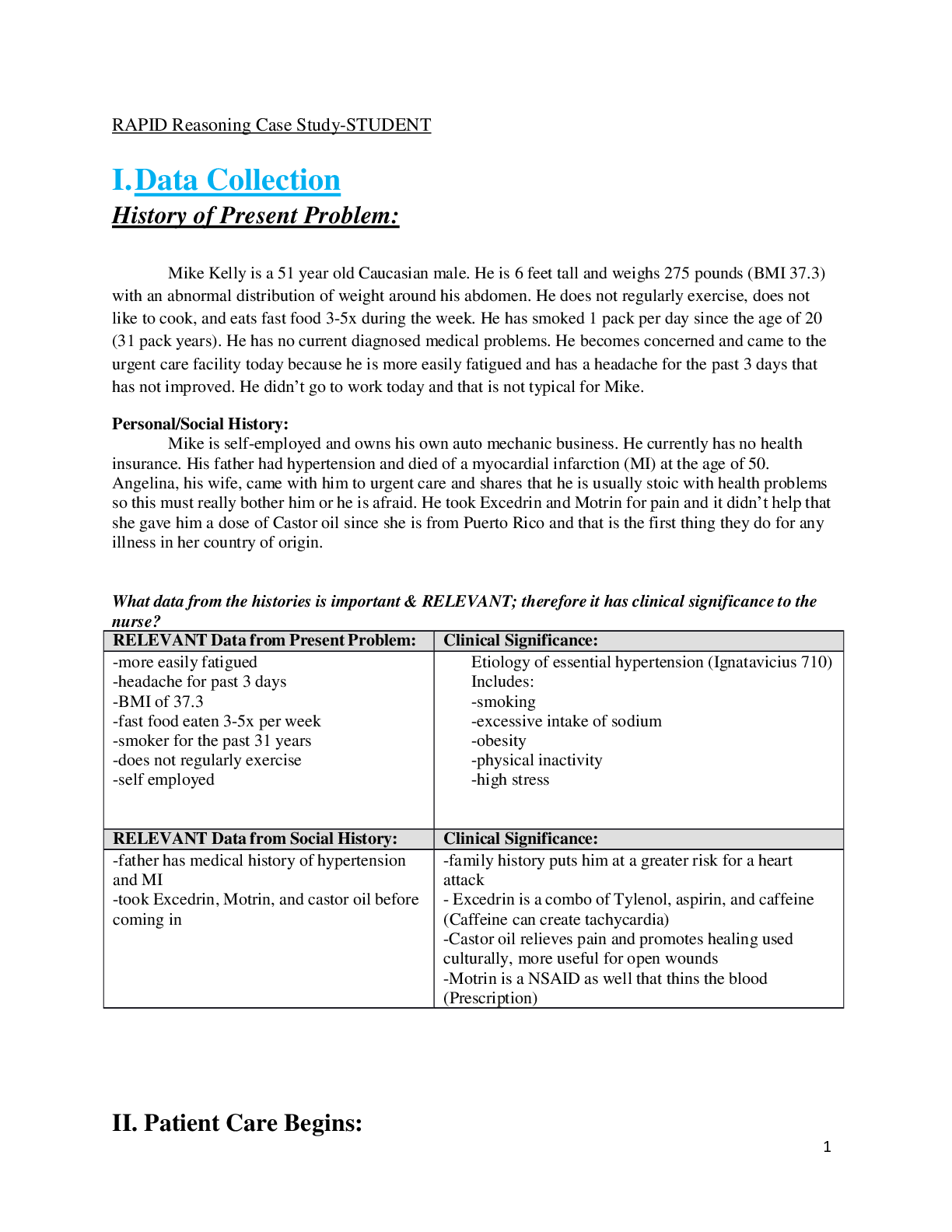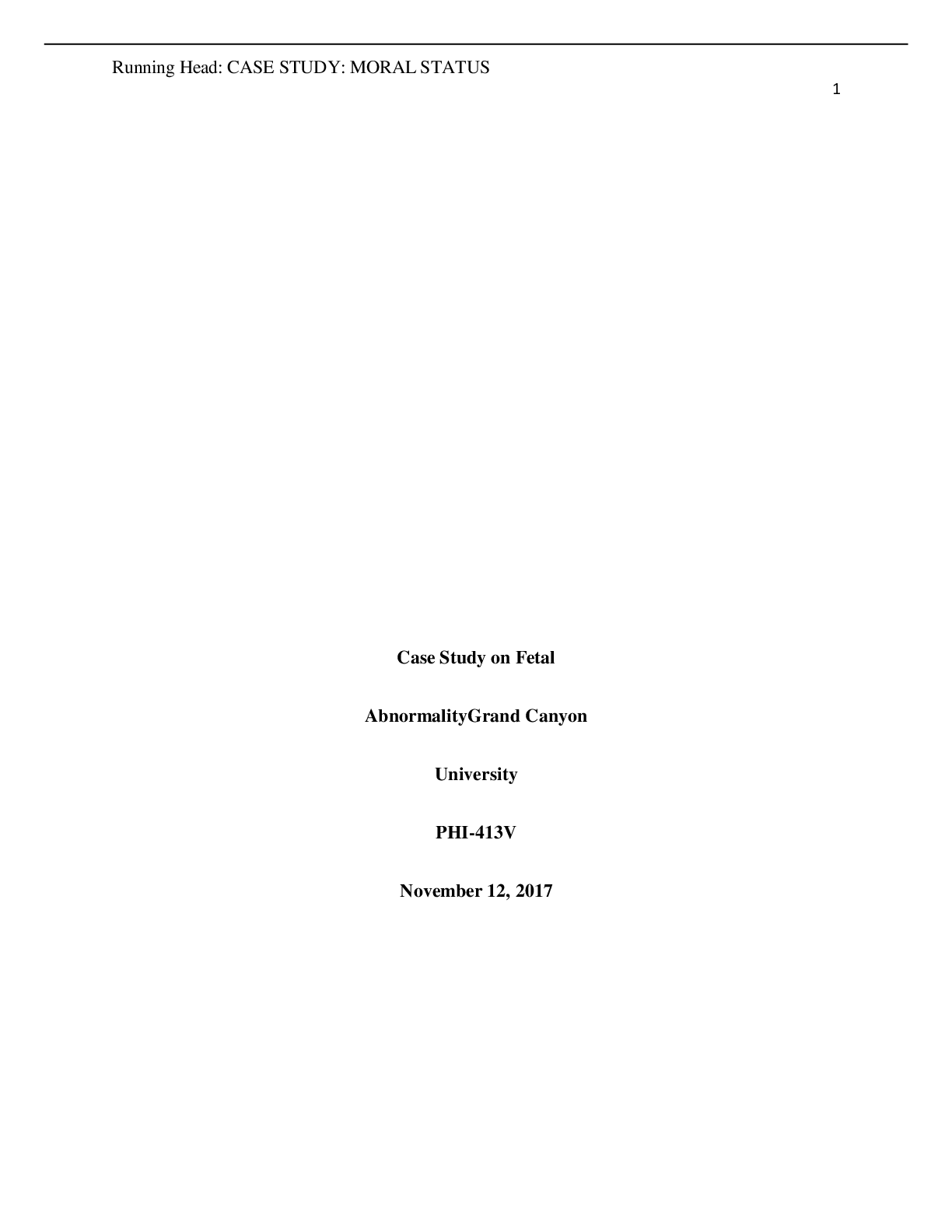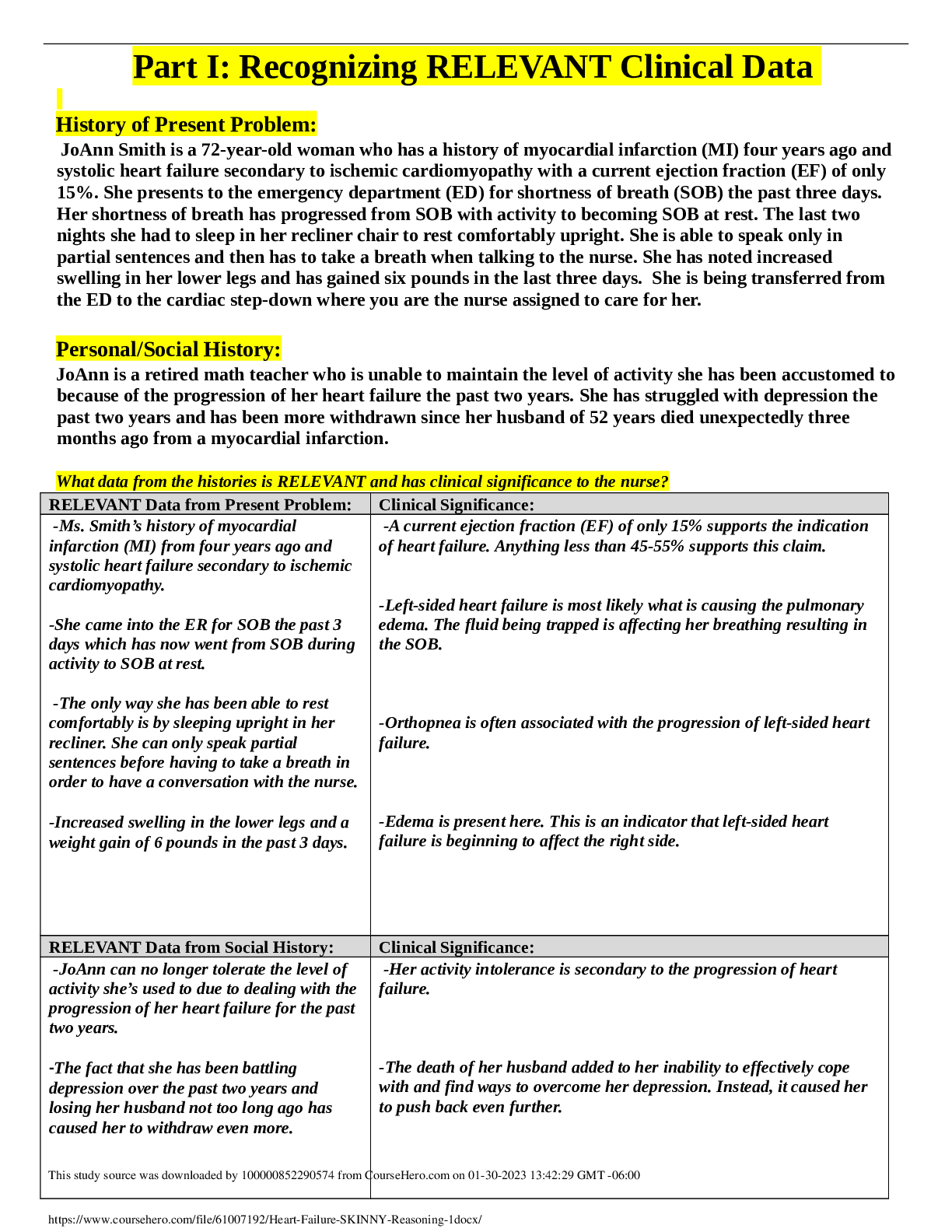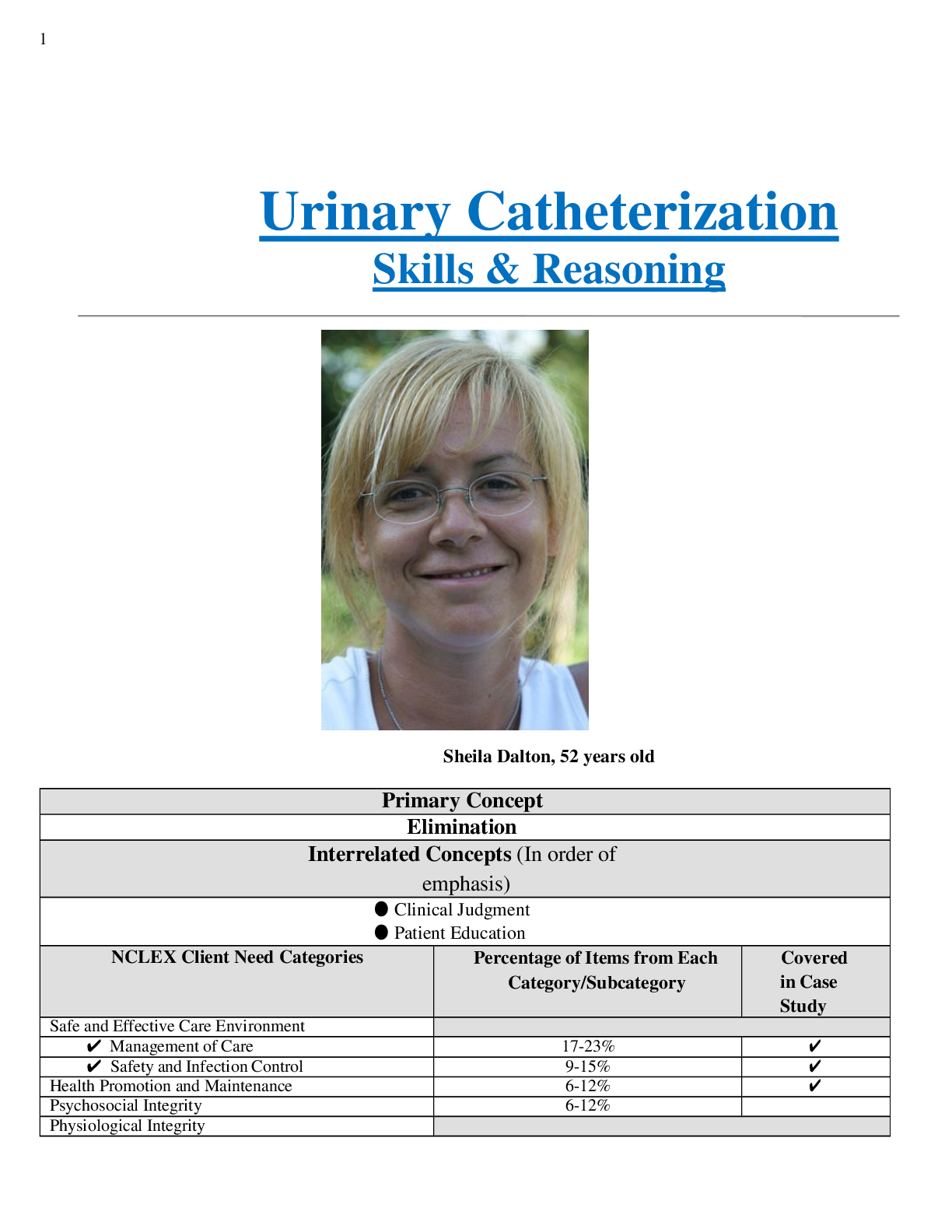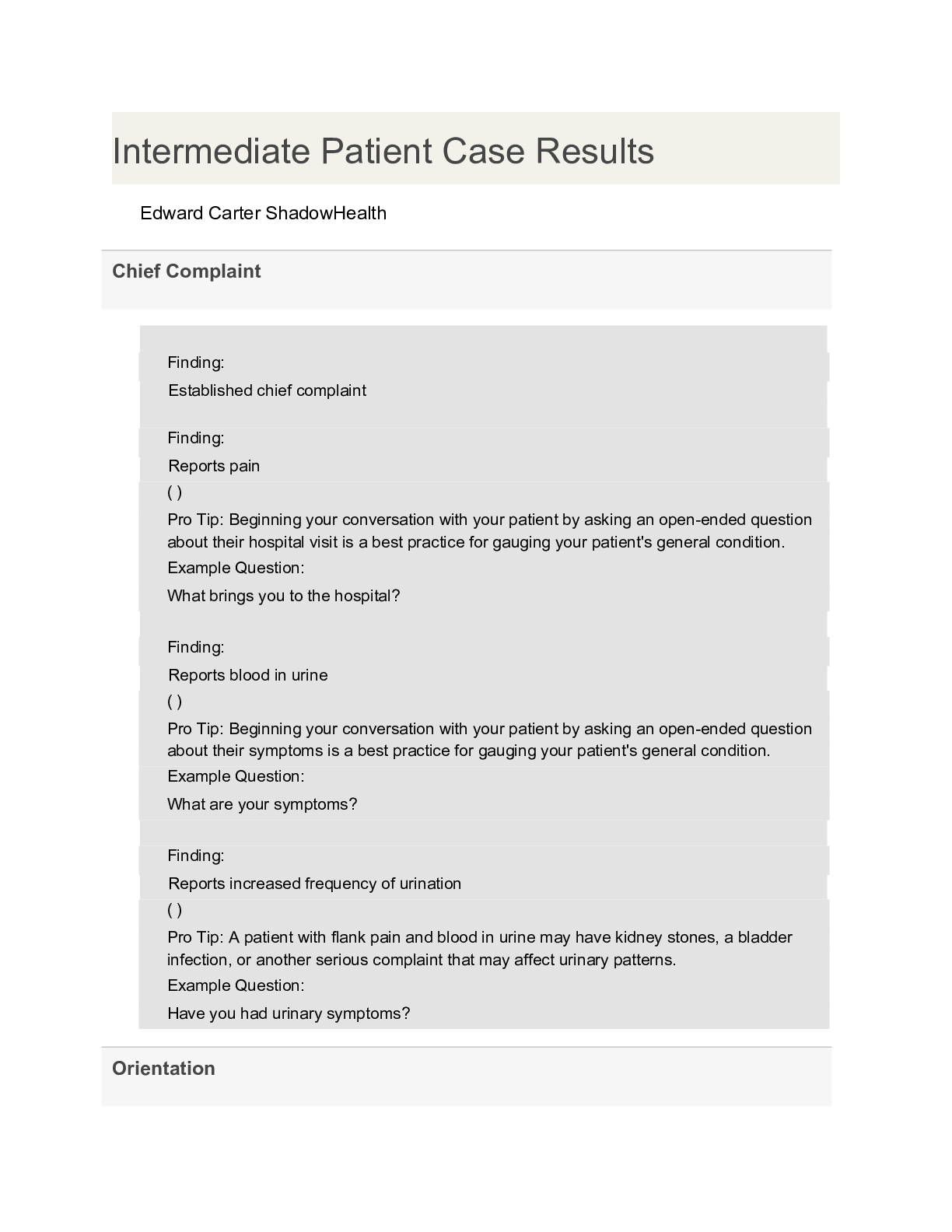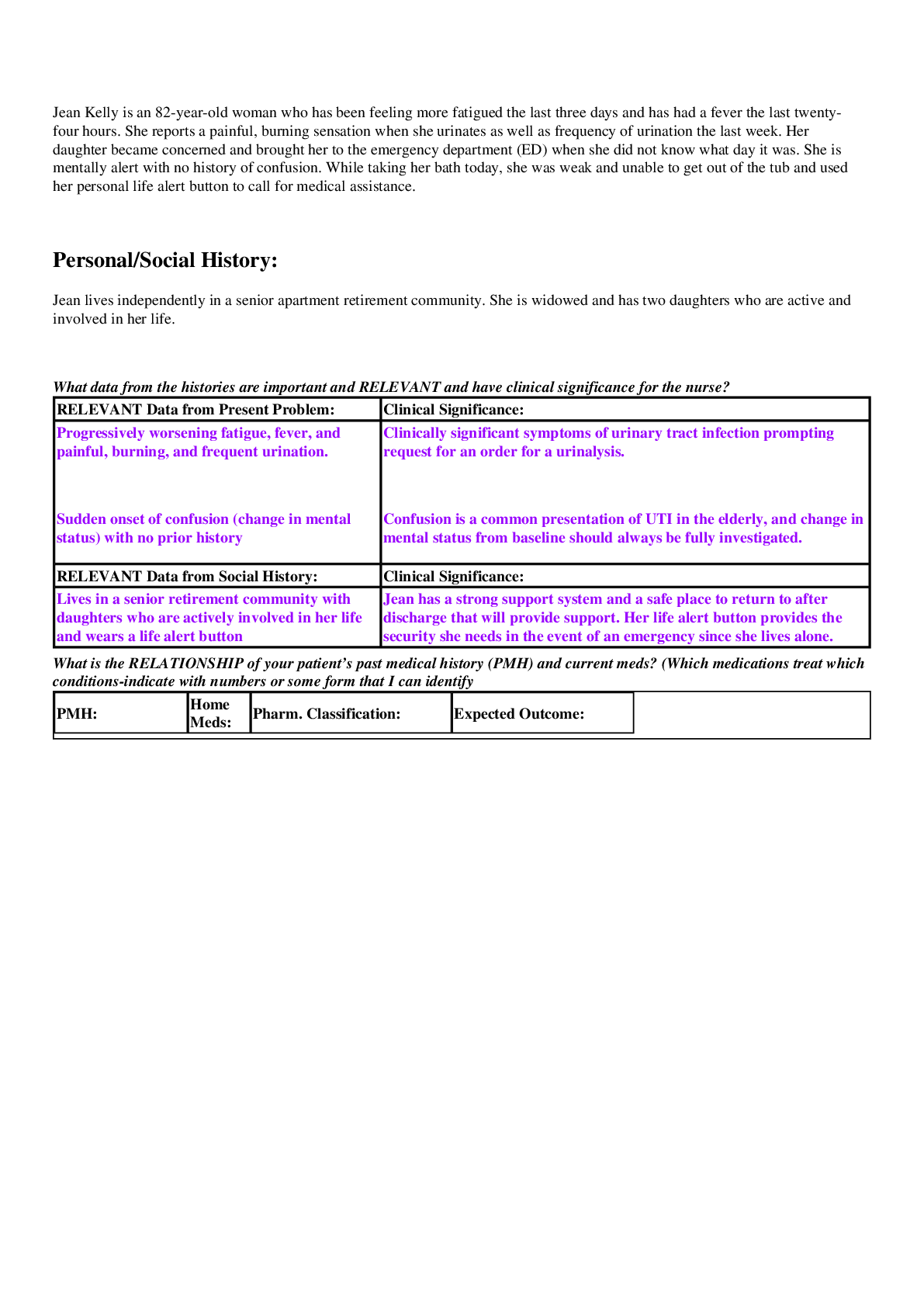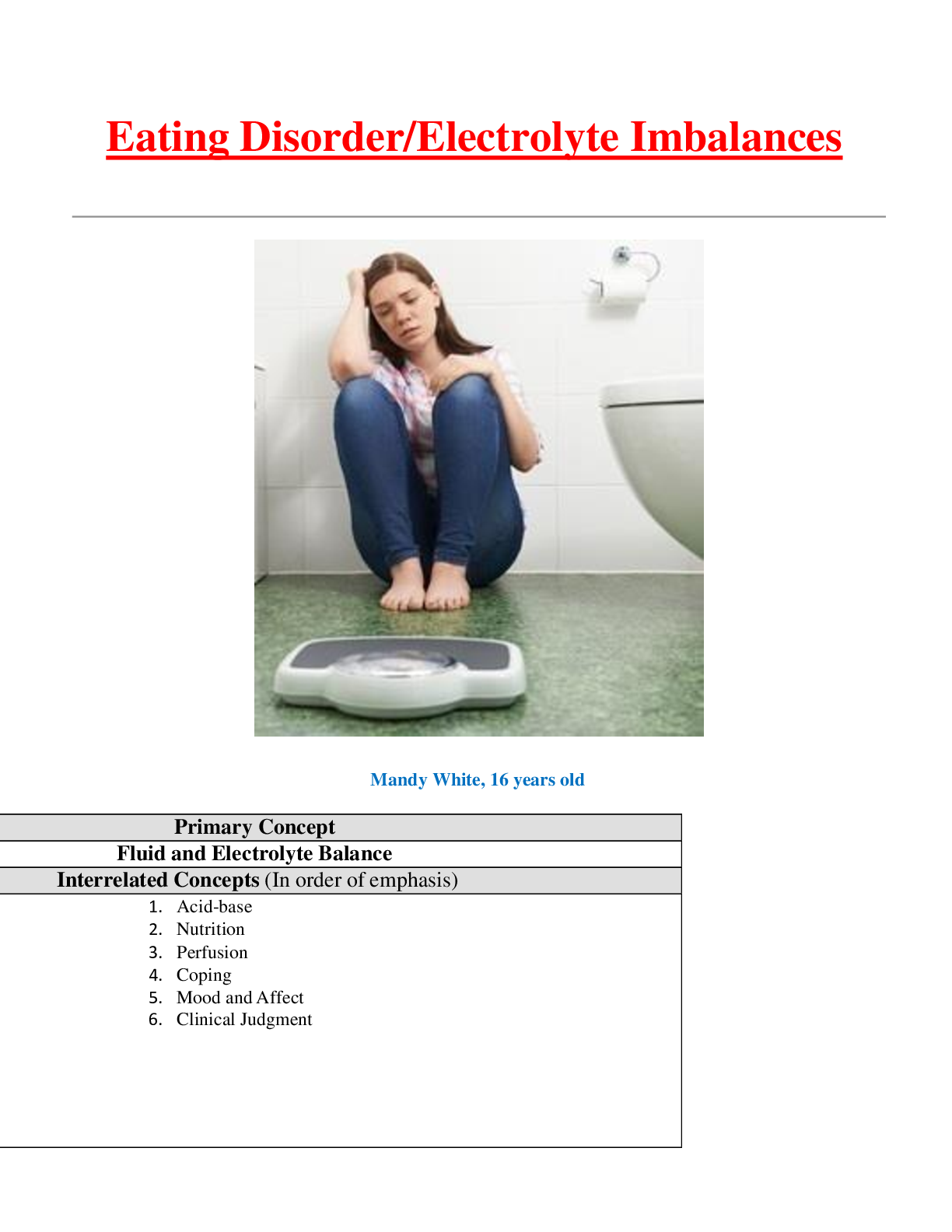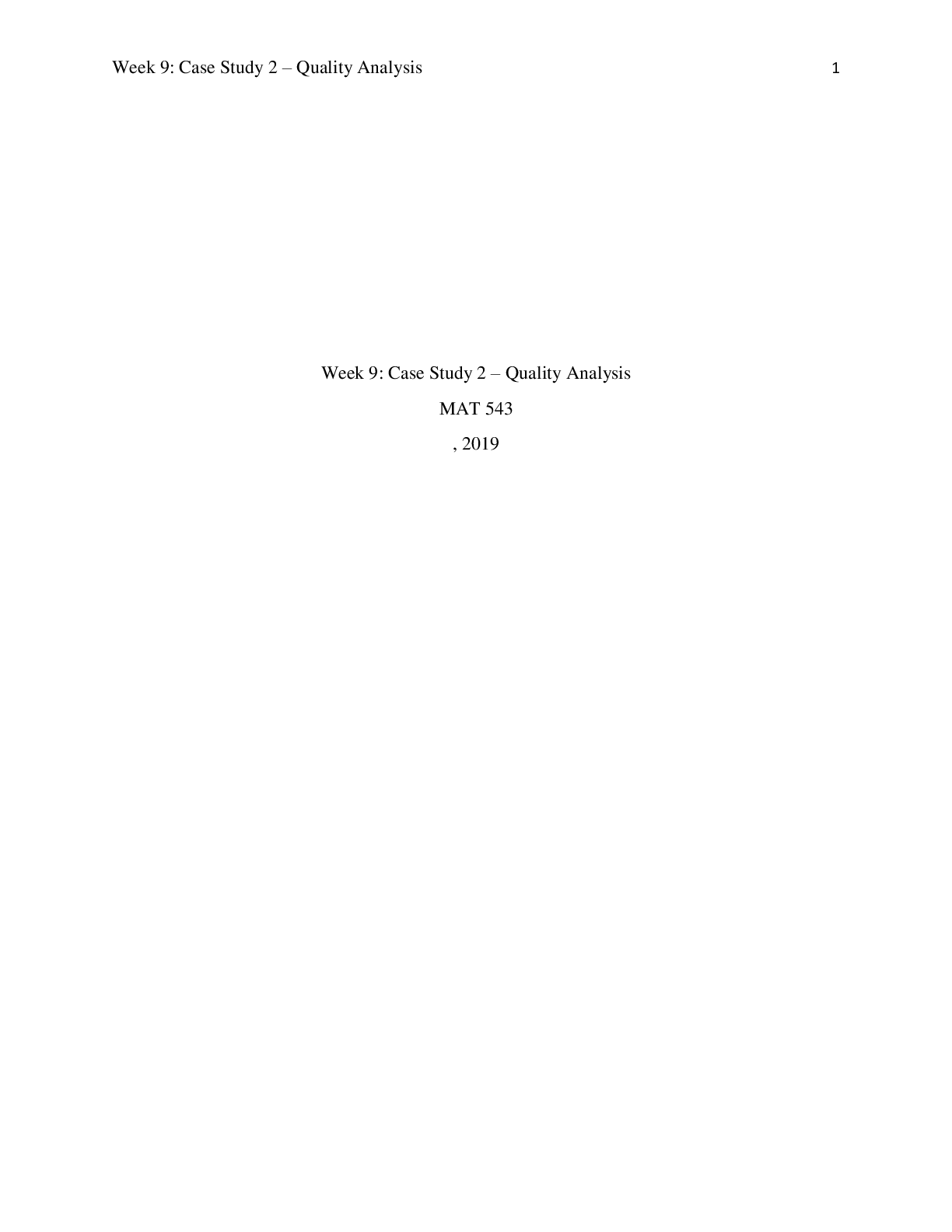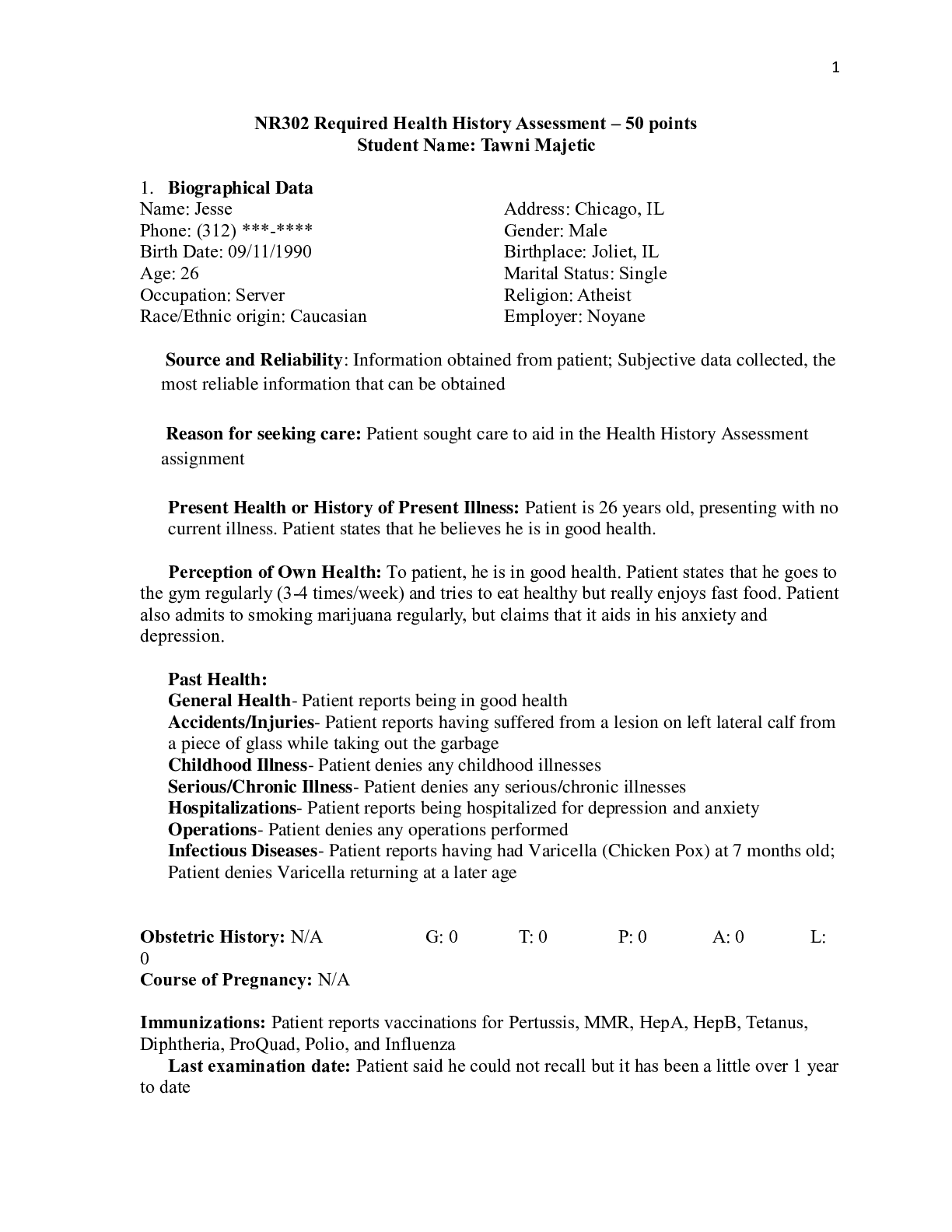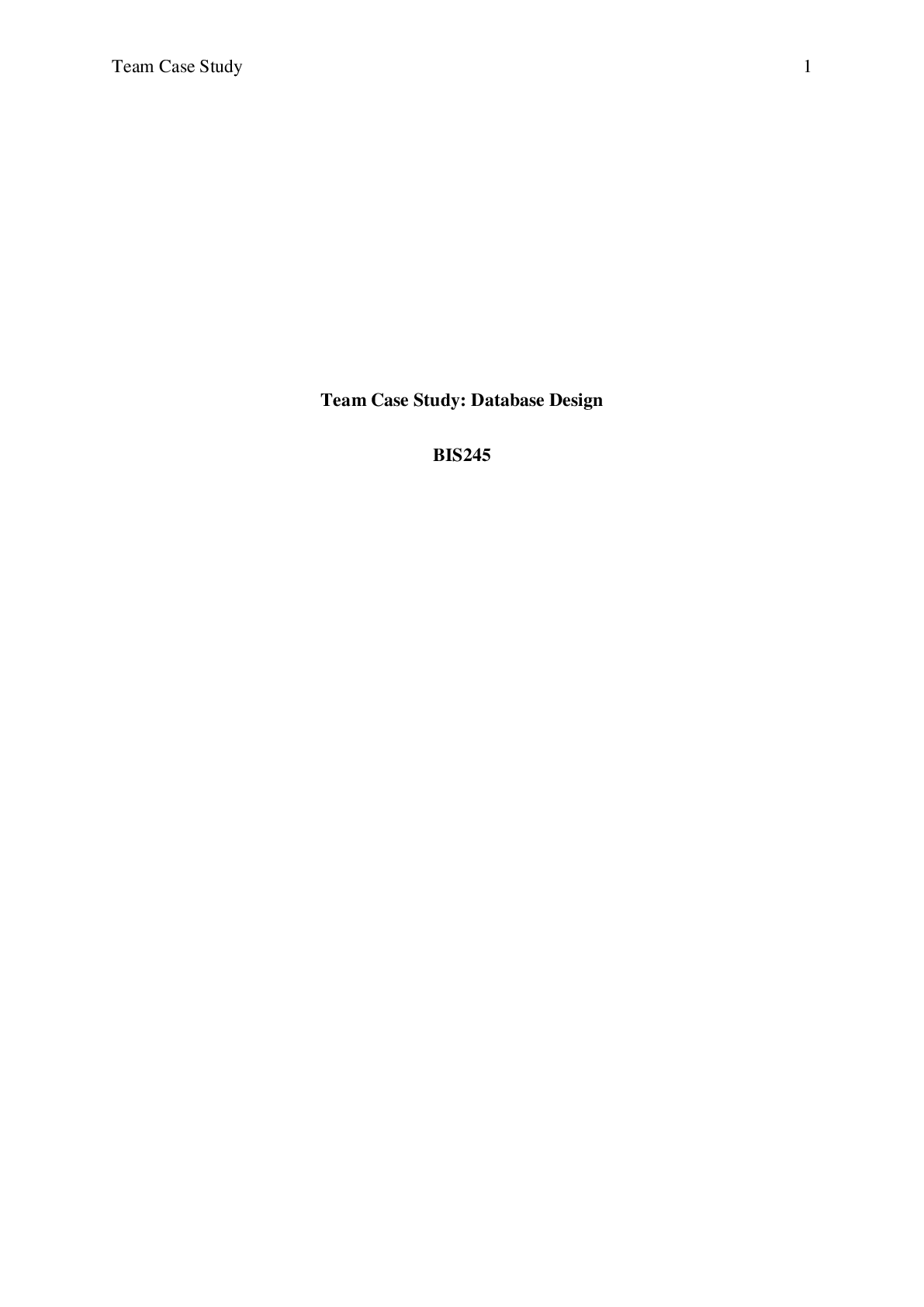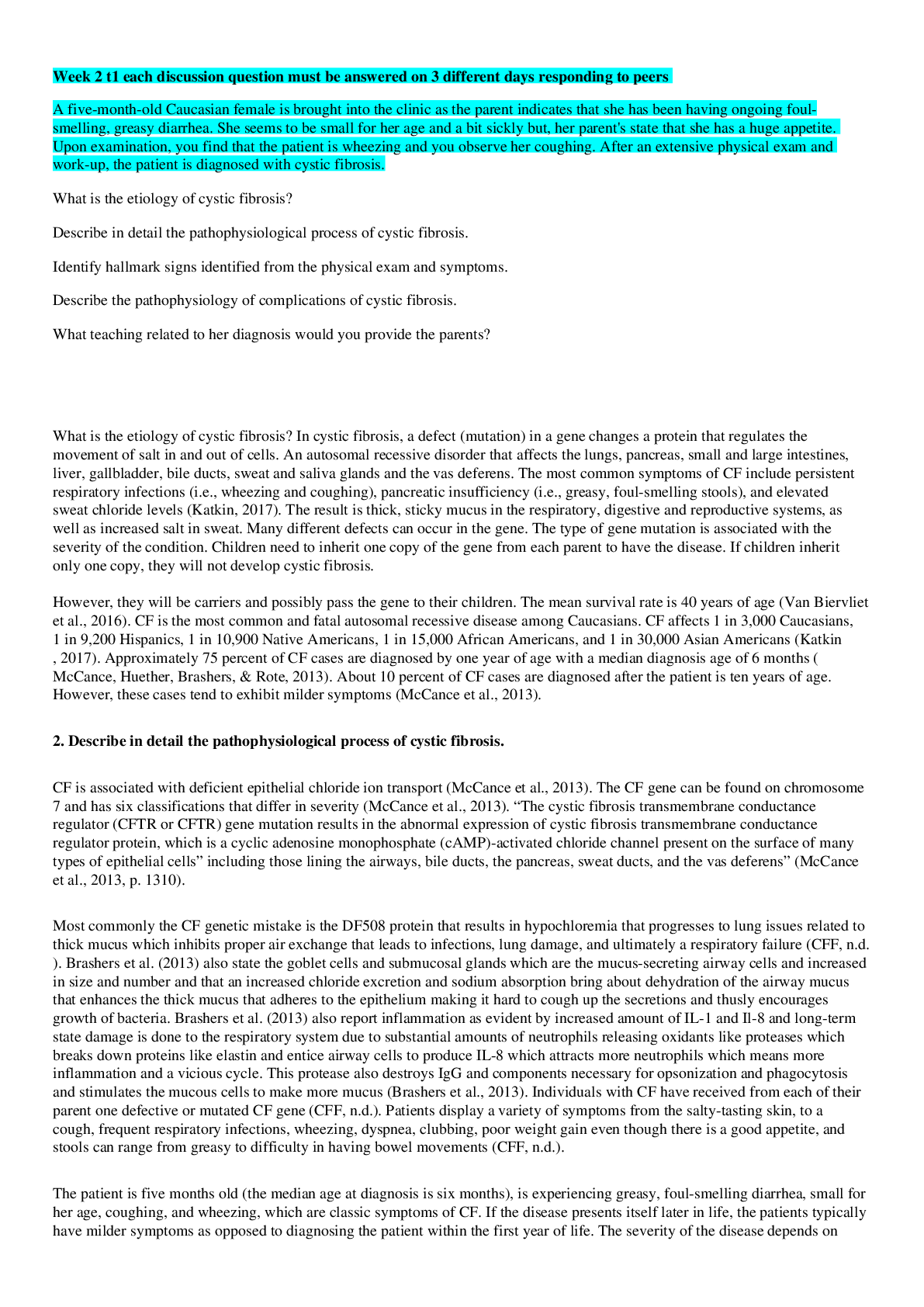*NURSING > CASE STUDY > NR507_Week3_Case Study (All)
NR507_Week3_Case Study
Document Content and Description Below
1. Are the spirometry results consistent with obstructive or restrictive pulmonary disease? What is the most likely pulmonary diagnosis for this patient? The spirometry results are consistent with ... obstructive pulmonary disease since the patients forced expiratory volume in 1 second (FEV1) is decreased as seen in obstructive pulmonary disease, the normal range is >80%. Also the patient’s FEV1/FVC ratio is less than 70% at a pre-bronchodilator prediction of 69% and a post-bronchodilator prediction of 64%. The TLC is 125 and the qualifications for Obstructive pulmonary disease has a TLC range that is considered normal at >120% (Van Dijk, W., Tan, W., Li, P., Guo, B., Li, S., Benedetti, A., & Bourbeau, J., 2015). The most likely pulmonary diagnosis for this patient is chronic obstructive pulmonary disease. 2. Explain the pathophysiology associated with the chosen pulmonary disease. Individuals who are diagnosed with chronic obstructive pulmonary disease experience the symptom of shortness of breath because they have difficulty exhaling all the air from their lungs. This is caused by the airway narrowing inside of their lungs due to damage to their lungs, therefore exhaled air is more slowly expelled. After fully exhaling, the individual will still have an abnormally higher amount of air left lingering in their lungs (Asp, K. C., 2020). COPD is a mixture of small airway diseases like obstructive bronchiolitis and emphysema and may differ between patients depending on their history, risk factors and exposure to pollutants. Chronic inflammation causes structural changes which narrow the airways causing limitation to airflow and mucociliary dysfunction (Global Initiative for Chronic Obstructive Lung Disease, 2018). 3. Identify at least three subjective findings from the case which support the chosen diagnosis. One subjective finding from the case which supports the diagnosis of COPD is that the patient has a 35 pack-year smoking history. The second subjective finding is that the patient complains of dyspnea with exertion. Lastly, the patient states he has a non-productive cough in the morning. .......................................................CONTINUED................................... [Show More]
Last updated: 1 year ago
Preview 1 out of 5 pages
Instant download
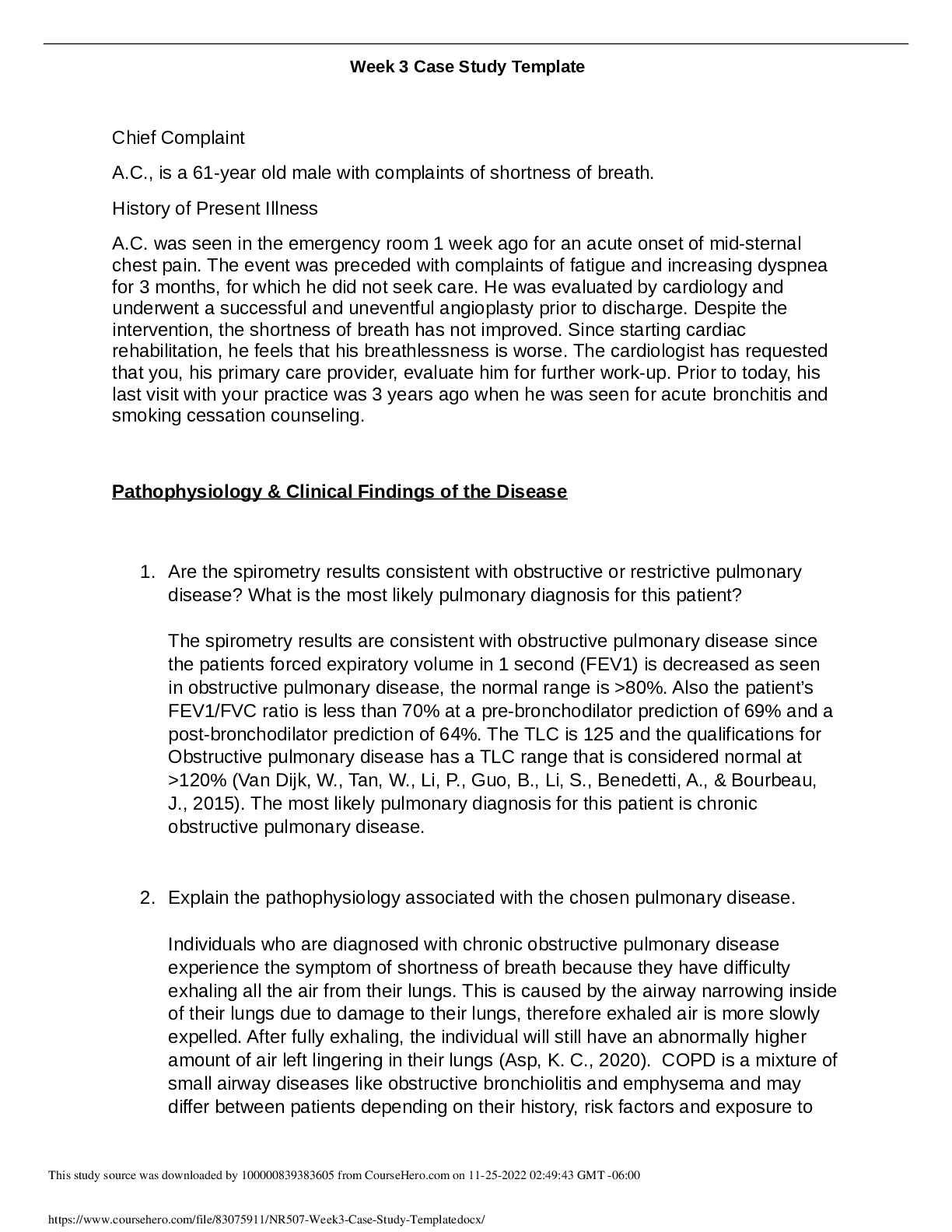
Buy this document to get the full access instantly
Instant Download Access after purchase
Add to cartInstant download
Reviews( 0 )
Document information
Connected school, study & course
About the document
Uploaded On
Feb 25, 2022
Number of pages
5
Written in
Additional information
This document has been written for:
Uploaded
Feb 25, 2022
Downloads
0
Views
45

